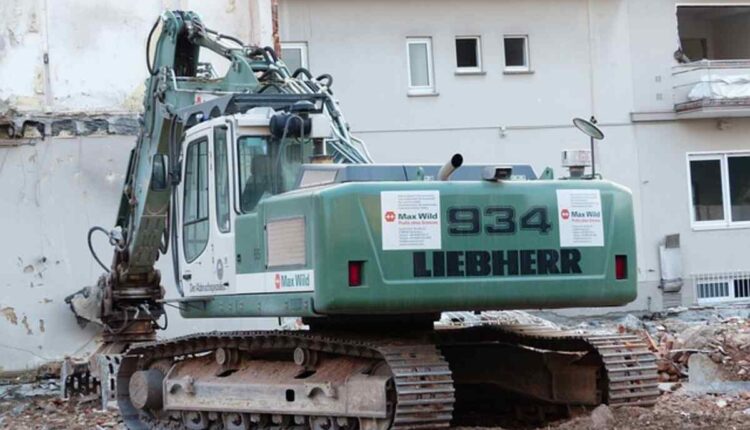Reusing Demolition Materials and Land Clearing Debris
Demolition waste can be recycled or reused in many forms. Finding local recycling markets for non-hazardous demolition materials and land-clearing debris may help your business create plans or specifications that promote material reuse over disposal. Best way to find the Garden Grove Demolition Contractor.
Regulated non-hazardous construction and demolition waste (C&D waste), including insulation, drywall, and wood paneling, can either be recycled into new buildings or sent off for reuse at recycling facilities.
Concrete
Concrete is an integral element in both residential and commercial construction projects. Once demolished, its debris can often be recycled for new uses—in 2018, over 600 million tons of construction and demolition (C&D.) debris, including concrete debris, was generated across the US alone.
Determining the right tools for any given demolition project depends on its scale. A key tool used to dismantle concrete structures is the jackhammer; this handheld machine effectively breaks up walls and other substantial concrete structures while decreasing structural damage and safety risks. When utilized properly, a jackhammer may even reduce risks related to structural damage or safety hazards.
Rotary hammers provide an eco-friendly alternative to jackhammers by featuring chipping capabilities that break up concrete into smaller pieces while minimizing noise, vibration, and dust production. Furthermore, these machines can be utilized effectively even in delicate environments where traditional jackhammers wouldn’t be suitable, such as residential properties.
Hydraulic and chemical pressure bursting is another effective means of dismantling concrete structures without creating noise or significant dust. By pouring the expansive slurry into drilled holes, this method uses lateral forces to break apart structures without making noise or creating significant dust emissions, making this method ideal for demolishing bridges, foundations, and pavement.
Brick
Brick is a common building material and can be recycled from demolition waste to use as an alternative to concrete in aggregate mixes, which is beneficial due to its environmental impact in production and use.
Recycling brick from C&D materials can reduce waste generation while creating other building materials like soil amendments or veneers for walls.
Traditional brickwork building demolitions generate a large volume of mixed debris composed of red ceramic bricks (and other wall elements), cement mortar, thermal insulation material such as expanded polystyrene foam (EPS or rock wool), smaller steel components, and pieces of timber that is difficult to recycle or separate for recycling purposes.
Bricks from demolition are most often sold to the aggregate industry as a base and fill material, which then resells them locally to contractors for use in roads, driveways, and other small projects.
Reusing brick waste from construction and demolition sites is an effective way of cutting costs for both industries while stimulating local economies with locally sourced recycled materials and decreasing landfill waste.
Wood
Wood is not only an invaluable material for new construction but can also be reused and recycled into other products like flooring, countertops, and paneling. A structural engineer should constantly evaluate used wood before being reused for reuse purposes; otherwise, it might breach building codes.
Wood can also be burned for energy production, helping reduce greenhouse gas emissions. Whatever material is chosen for use, however, it should never end up in landfills where it pollutes the surrounding environment and forces companies to purchase more raw materials than necessary for new building projects.
Demolition materials can be separated and sorted on-site or off-site to prepare them for recycling, either during deconstruction or post-project at a C&D facility or resource recovery center. Once recycled, C&D materials can then be utilized in various ways – including as an alternative solution to traditional concrete and asphalt road building materials.
Deconstruction offers an eco-friendly alternative to traditional demolition that conserves materials and resources. It involves carefully dismantling structures to salvage usable components, such as doors or windows, for reuse and reduced disposal. Deconstruction may help protect finite old-growth forest resources while simultaneously creating jobs in local communities by recycling salvaged materials into new products or materials.
Metal
Metal can often be lost during demolition processes, but some pieces can still be salvaged. Melting and recycling can yield new building materials; alternatively, it may be reused in construction projects. Both approaches are more environmentally sustainable than digging up new materials from the ground, which releases methane gas into the atmosphere.
Recycling demolition materials saves contractors money and helps reduce landfill waste while strengthening local economies, as materials are typically sourced locally. Unfortunately, recycling alone cannot solve all the issues surrounding demolition debris; that’s why deconstruction and reuse should also be considered prior to starting your next project.
Contractors should inquire of their subcontractors, licensed haulers, and C&D processing or recycling facilities about how they handle and dispose of debris from a renovation or demolition project, then use that knowledge to develop more sustainable disposal practices for future projects. General contractors should make sure to inquire how C&D waste is weighed for reporting purposes – providing this weight information is critical when creating recycling reports, and it is wise to reach out to recyclers about how they sort and handle material while meeting regulatory requirements for source-separated C&D waste.


